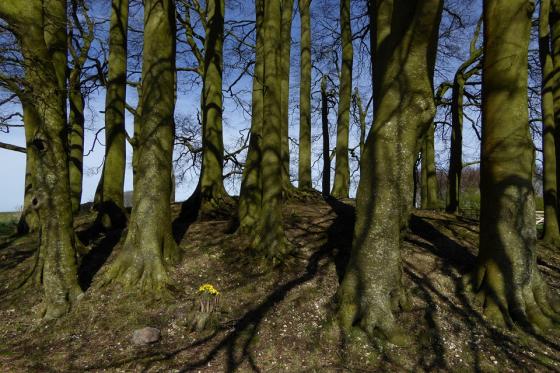I found this in the Wiltshire Arch Magazine (v59 – 1964). This is from long before the enclosure was spotted on aerial photos. Could it be just wishful thinking that it’s the traces of another really old track focusing in on and passing by the site? Maybe it’s just coincidence, and mere romanticism for me to posit such an ancient origin.
“In July 1962 Mr C N Tilley drew attention to a cropmark showing intermittently in corn for 2 miles and following roughly the 600ft contour line south of Savernake Forest from Durley to Langfield Copse, dropping down near Crofton Pumping Station and then winding up the hillside south of Wilton Brail. According to one of the oldest local inhabitants it was the line taken in his father’s time by shepherds going from Cirencester to Weyhill Fair with their flocks.”
It’s certainly seems a memory of a long distance route (Cirencester to near Andover). How long does a route take to make an appreciable crop mark I wonder? Perhaps not long.
Whatever, Weyhill Fair was a major sheep fair held since... well since a ridiculously long time ago, according to the info at
testvalley.gov.uk/Default.aspx?page=349
a website which also claims Weyhill is the crossing point between the Harrow Way (taking tin from Cornwall to Kent) and ‘the Gold Road’ bringing Irish gold through Holyhead down to Christchurch Bay.




















































































































































